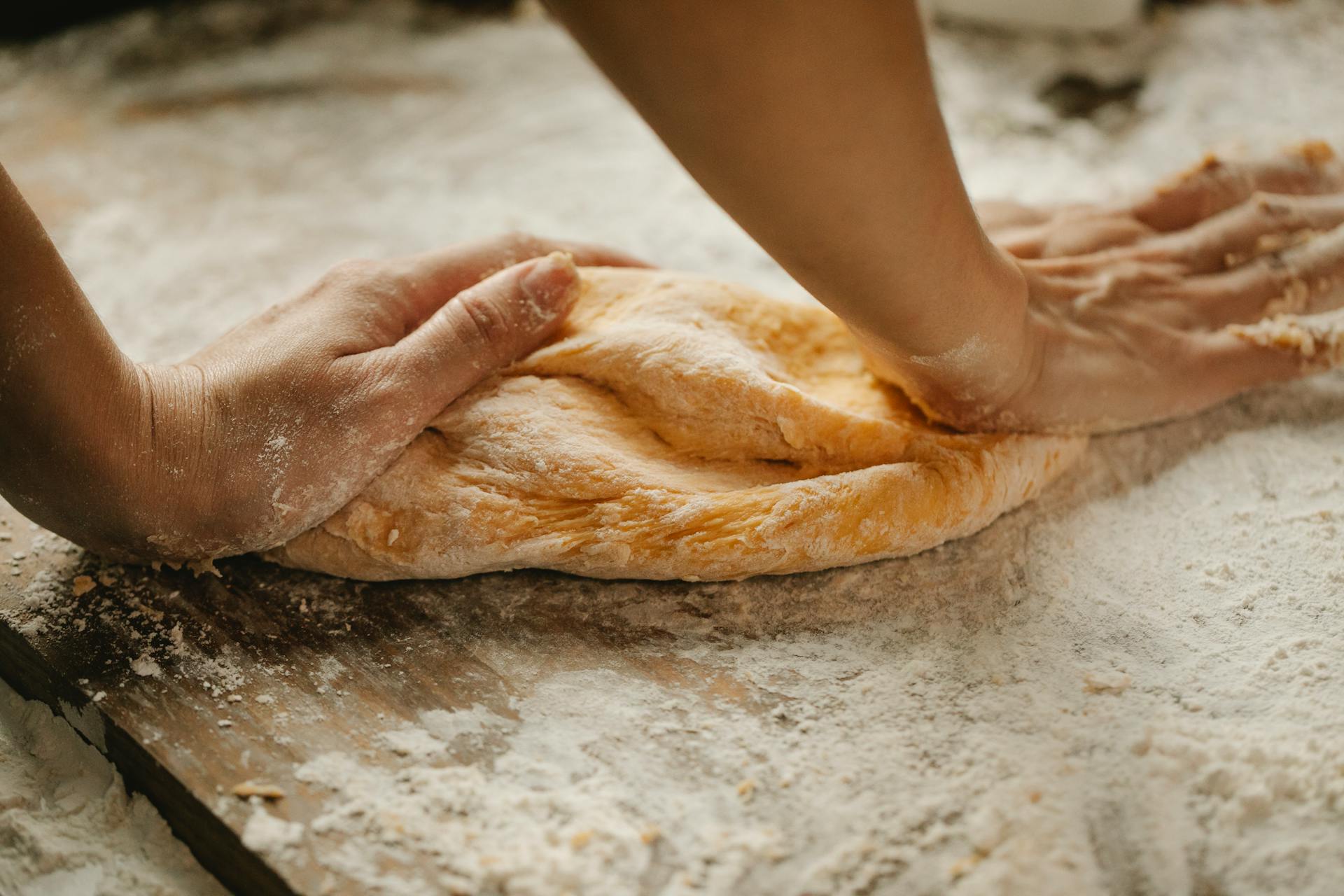
One of the most beloved breakfast dishes, scrambled eggs with cheese, is a tasty and protein-packed meal. But did you know they also contain an ample amount of calories? Depending on what ingredients you use - and how much of them - the calorie count can vary.
A single, small serving (about 1.6 ounces or 45 grams) of scrambled eggs cooked only with oil or butter contains about 103 calories. If you’re following a diet plan that requires counting calories, this information is essential for keeping your day-to-day intake in check.
When adding other ingredients such as cheese - one tablespoon or 14 grams will add about 23 additional calories to your dish! An extra large egg contains about 73 calories without any additional ingredients so if you’re looking to keep your calorie count low then opt for using fewer eggs in the scramble.
For those who are trying to keep track of their caloric intake and still enjoy delicious scrambled eggs with cheese every once in a while, be sure to take note of portion sizes when it comes to both eggs and cheese - altogether these two staples contain roughly 176-179 total calories per 4 ounce serving!
A unique perspective: How Much Just Egg for One Egg?
How many calories in a fried egg?
If you're watching your calorie intake, you may want to keep an eye on how many fried eggs you eat in a day. One large fried egg contains approximately 90 calories. The caloric value for a medium-sized egg is about 75 calories and for a small one it's around 60 calories.
When frying eggs, the amount of oil or butter used determines the total calorie count. A single teaspoon of oil contains around 45 calories and each tablespoon of butter is made up of around 100 calories. If you need to lower your fat and calorie intake, consider using cooking spray instead which typically has little to no calories per serving
In addition to the fat content from oil or butter, take into account that fried eggs lack essential vitamins and minerals that are generally found in scrambled or boiled eggs which can result in a nutrient-poor meal choice overall. To get more out of your diet, it’s best to stick with other types of cooked ways to prepare an egg versus choosing the fried option.
Bottom line: One large fried egg contains approximately 90 calories but adding fats from oil or butter will increase its caloric content further so make sure you take this into account when counting your daily calorie intake.
Additional reading: 2 Fried Eggs
What is the calorie count of an omelette with vegetables?
An omelette with vegetables can be part of a nutritious breakfast and lunch option. However, it is important to remember that the calorie count of an omelette with vegetables will depend on the type and amount of ingredients used.
If you are making your own omelette, generally each egg contains 72 calories so two eggs would equal around 144 Calories in total. To this base you can add assorted vegetable fillings such as mushrooms, onions, peppers and even tomatoes. The exact nutritional information will depend on the quantity you are using but some common additions include: roughly 65 Calories for a cup diced onion; lower than 10 Calories for half cup of diced bell peppers; 28 to 35 calories for half cup (118 ml) sliced mushrooms; 12 to 20 calories for one tomato slice or 2 tablespoons chopped fresh parsley. Cheese is also often added - approximately 25 Calorie per tablespoon (14 grams).
If all these ingredients added together it could mean that your personalized veggie-packed version could be well over 200 Calorie per portion or higher if you choose to add additional cheeses or high Calorie items such as cooked potatoes. However by staying mindful about how much food we put into our dish we can make sure our meal remains healthy and balanced while still packed full of flavourful vegetables!
How many calories are in a poached egg?
Eggs are a great source of protein and other essential vitamins and minerals, but did you know that one poached egg can pack quite a calorie punch? A single large-sized egg cooked in boiling water without the addition of fat contains approximately 86 calories. That’s right – just one! But when prepared in boiling water with butter, salt and pepper, the number jumps to 140 calories.
To help you visualize how these 86 or 140 calories break down; a single poached egg has 5.6 grams of fat, 0.4 gm of carbohydrate (of which sugars provide only 0.1 gm) 6gm protein and several other micro-nutrients such as folate, iron etc..What’s interesting is that despite having more than double the amount of calories compared to a regular boiled egg (~76 calories), 1 poached egg does not feel ‘heavy’ on your stomach at all! This makes it good for those who prefer low-calorie meals but don’t want to give up on proteins or nutrition profile altogether.
So if you have been tracking your diets or following healthy eating regimes lately then adding an occasional poached egg into your breakfast cannot possibly do any harm as long as you keep an eye out on how many portions per week you eat them in — all while ensuring that it is cooked just right to preserve its goodness present both inside and outside its shell like any other 'better'than scrambled' versions of eggs (wholegrain toast included)!
A fresh viewpoint: How Much Just Egg Is Equal to One Egg?
Are scrambled eggs with cheese a healthy breakfast choice?
Scrambled eggs with cheese can be a healthy breakfast choice, as long as you make smart ingredient choices. Eggs are a great source of protein and are low in calories, while cheese is an excellent source of calcium and provides B vitamins, which makes this combination an interesting balance of nutrients. When made with healthy ingredients like low-fat or fat-free cheese and organic eggs, scrambled eggs with cheese can be part of a nutritious breakfast.
It’s not just about the ingredients you use to make the eggs because the way you cook it also matters too. To make it into a healthier breakfast there should be minimal added fat when cooking - such as using butter or oil instead opt for grilled over fried to save some extra calories and fats from your meal. As well, adding in flavorful vegetables like bell peppers or spinach can help reduce fat content while also offering vital vitamins and minerals for optimal health benefits.
To give your breakfast even more nutrition boost add some nutritious sides like fresh fruit or oatmeal; both full of essential vitamins minerals that your body requires in order to stay healthy and fuel up properly throughout the day! All together these elements will make not just a balanced breakfast but one that's satisfying too!
Expand your knowledge: Croatian Cheese Strukli
How much fat and protein does a hard-boiled egg have?
Hard-boiled eggs make an excellent source of protein and healthy fat while also being incredibly convenient to whip up. If you're looking for a quick and easy snack, hard-boiled eggs are a great option! But just how much protein and fat can you get in one egg?
A single large hard-boiled egg contains about 6 grams of protein, 4.5 grams of fat, and 78 calories. That's relatively low in terms of fat content when compared to other sources, making it an ideal choice for those watching their saturated fats or overall calorie intake.
When it comes to what type of fats this egg has, almost half is made up of monounsaturated fatty acids (naturally occurring trans fats like omega-3s and omega-6s) which help reduce bad cholesterol levels in your body. The remaining two dietary types found will be polyunsaturated fatty acids (PUFAs) including linoleic acid (an important necessary fat), as well as saturated fatty acids (SFAs). So if you’re someone trying to reduce your overall SFA content this would be the perfect option!
In addition to being low in fat, boiled eggs are packed with food essentials like vitamins A & D, B6 & B12 folate mineral salts zinc manganese potassium phosphorus selenium iron sodium magnesium as well as meaningful amounts calcium chlorine iodine sulphur cobalt silicon nitrogen phosphorus chromium molybdenum fluorine copper vanadium yttrium tin lead lithium aluminum boron arsenic nickel antimony strontium rubidium silver gallium oxide beryllium germanium telluride etc. As such they pack multiple beneficial sources into the same package so make sure not forget that before making your next meal choice - especially if time is limited yet nutrition still matters!
What is the calorie count for scrambled eggs with a side of toast?
Scrambled eggs with a side of toast can be an affordable and easy breakfast option that doesn't leave you feeling too full and sluggish first thing in the morning. But if you're watching your calorie intake, it's important to know how many calories are in this seemingly harmless meal.
Unfortunately, determining the exact calorie count for scrambled eggs and toast is impossible, as the nutritional content depends on various factors such as what kind of oil you use to cook the eggs, what type of bread you choose for your toast and even how many eggs are used to create your morning scramble.
To give a rough estimate though, if we assume you’re using two large eggs cooked with cooking spray plus two slices of whole-grain wheat toast spread with a teaspoon of butter each - then this breakfast would set you back approximately 420 calories. This isn’t the lowest-calorie breakfast out there but it could be a reasonable option depending on your diet goals trying to hit by lunchtime!
Now that doesn't mean you have go leave out any additional ingredients like cheese or spices from your scrambled egg dish as these can actually help to provide other essential vitamins and minerals without adding too many extra cals. Just remember though: keep portions small enough where your daily caloric intake remains low enough at each meal so that it fits into whatever grand total goal is set before the day ends!
Broaden your view: 2 Eggs Scrambled
Featured Images: pexels.com


